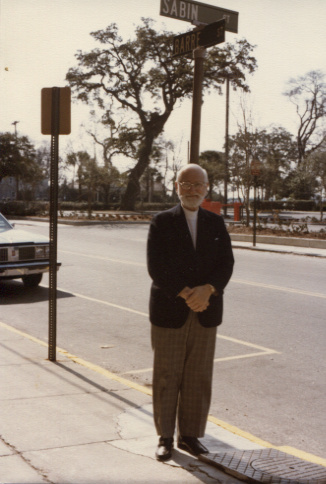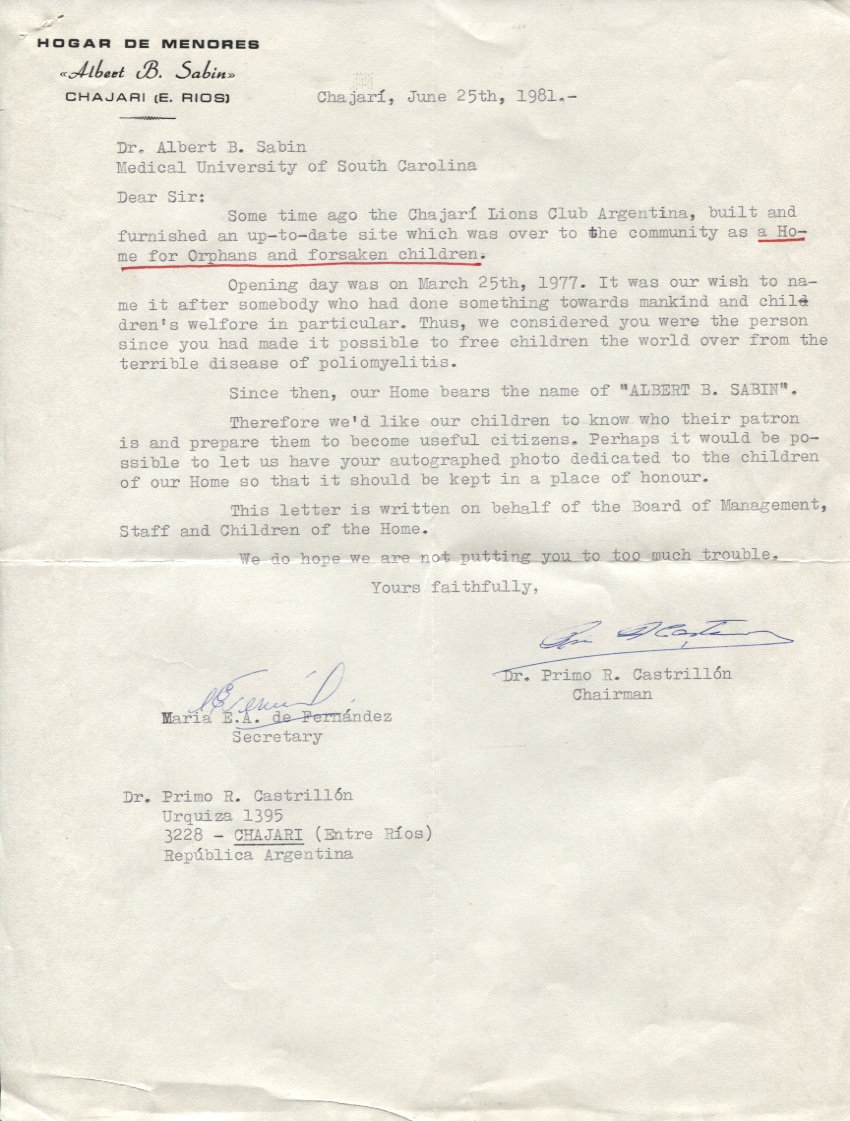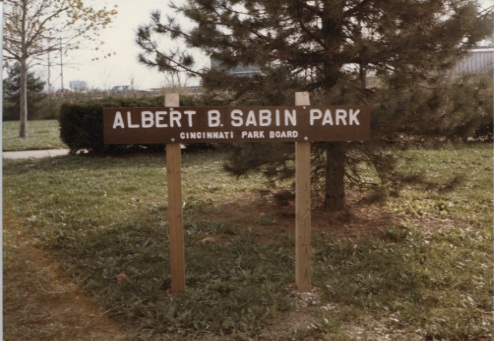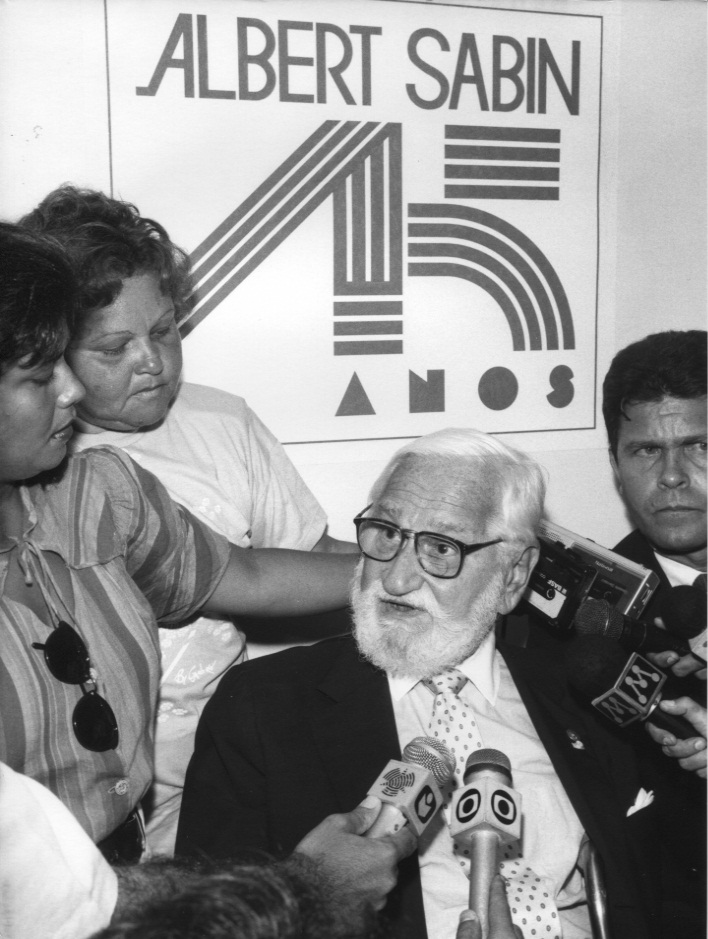
This "Sabin Street" sign is located on the campus of the Medical University of South Carolina in Charleston, South Carolina.
The Sabin project student assistant Megan Ryan and I have been working very hard on converting the Sabin collection inventory into a web-based finding aid for the archives, which will be accessible online next week. For those of you that don’t know, according to the Society of American Archivists, a finding aid is “a tool that facilitates the discovery of information within a collection of records,” or “a description of records that gives the repository physical and intellectual control over the materials and that assists users to gain access to and understand the materials.” In the case of the Albert B. Sabin archives, this finding aid will help users across the globe have a better understanding of the materials we have in our collection, as well as help the Winkler Center provide access to the collection to its users. We have used the Encoded Archival Description (EAD) format, which is the standard used by archival repositories worldwide and endorsed by the Society of American Archivists.
This process has us re-analyzing much of the collection. Recently while looking through some boxes, I found some materials that related to one of my previous blog posts called “Dr. Sabin’s Name.” In the blog, I asked about other places that were named after the good doctor. It turns out that the previous Sabin archivist, Maggie Heran did a wonderful job of arranging and describing Dr. Sabin’s papers. The work that she did made our job of creating an EAD-compatible finding aid much easier. In this case, several folders contained information about clinics, streets, and other things that displayed Dr. Sabin’s name. Here are some interesting things found in these folders:

Here is a letter from Dr. Primo R. Castrillón to Dr. Sabin regarding the naming of a home for "orphans and forsaken children," 1981.

This park was located in Cincinnati, Ohio, south of Third Street between Plum and Elm Streets. It was dedicated in 1977.

The Centro Hospitalar Albert Sabin was dedicated in 1974 in Recife, Brazil. This photo shows Dr. Sabin being interviewed at the 15th anniversary of the hospital.
I hope that you enjoy the photos and documents located in these folders as much as I have! Also, be on the lookout for our finding aid next week!
In 2010, the University of Cincinnati Libraries received a $314,258 grant from the National Endowment for the Humanities (NEH) to digitize the correspondence and photographs of Dr. Albert B. Sabin. This digitization project has been designated a NEH “We the People” project, an initiative to encourage and strengthen the teaching, study, and understanding of American history and culture through the support of projects that explore significant events and themes in our nation’s history and culture and that advance knowledge of the principles that define America. Any views, findings, conclusions, or recommendations expressed in this blog do not necessarily reflect those of the National Endowment for the Humanities.

